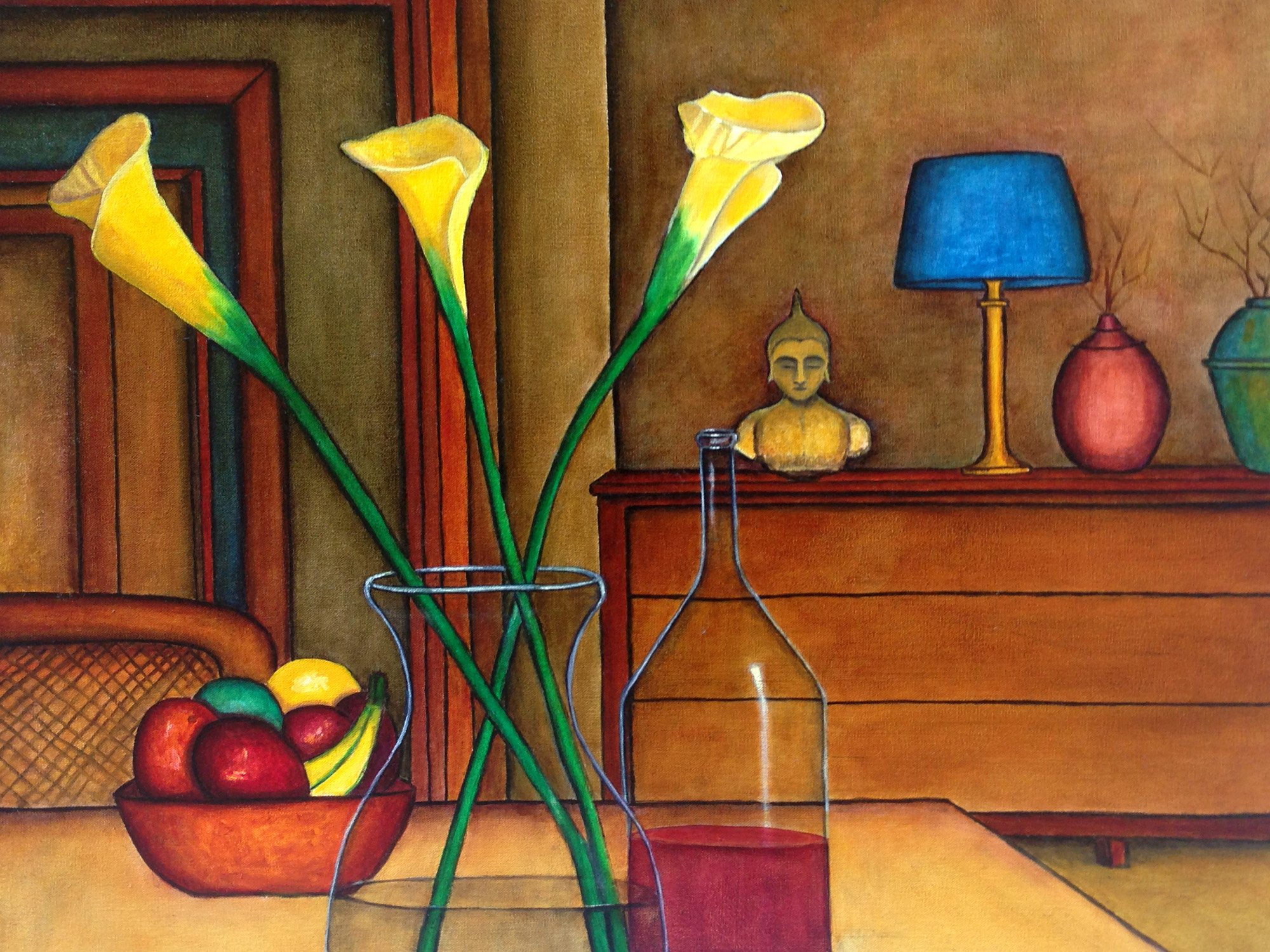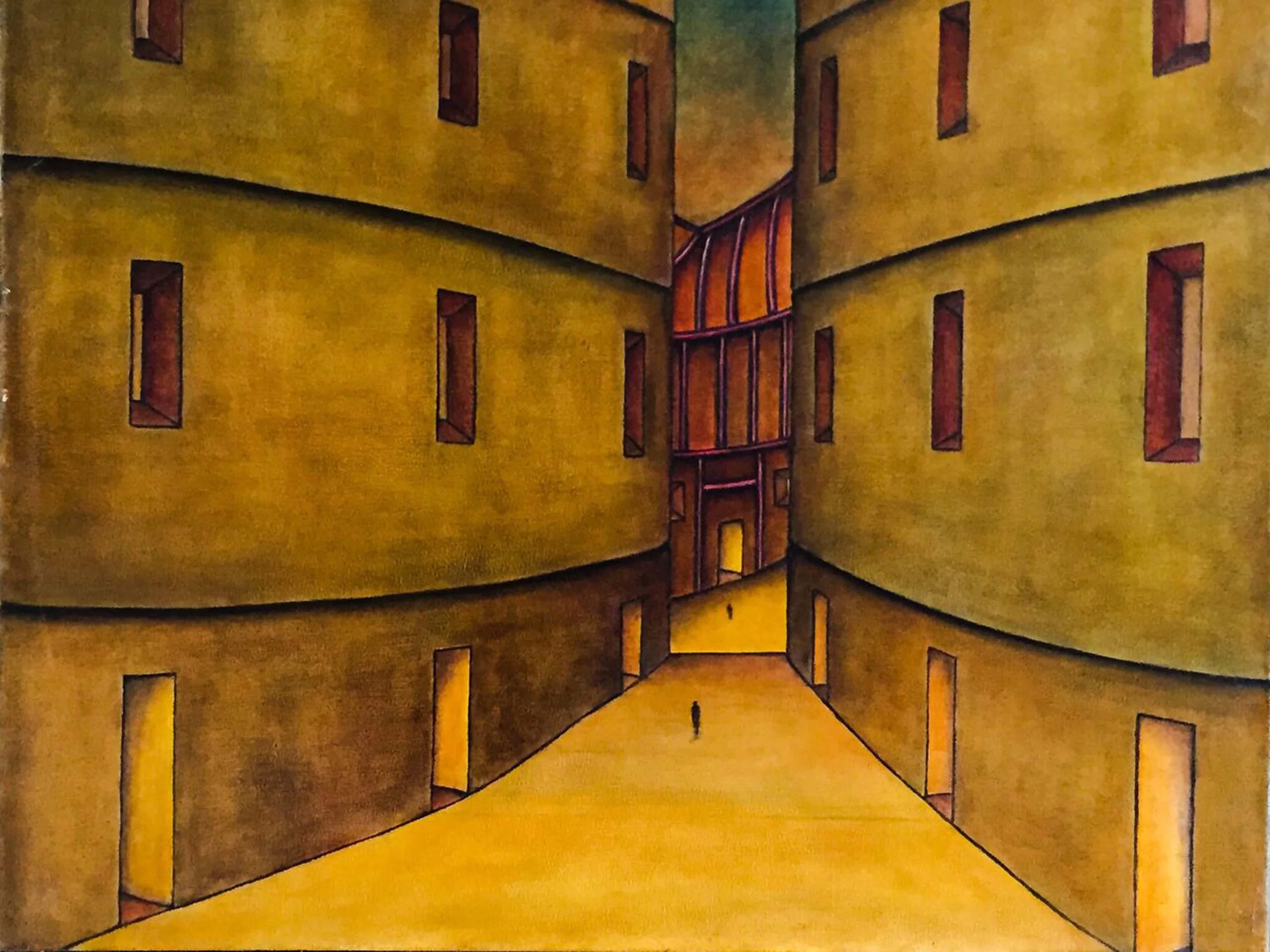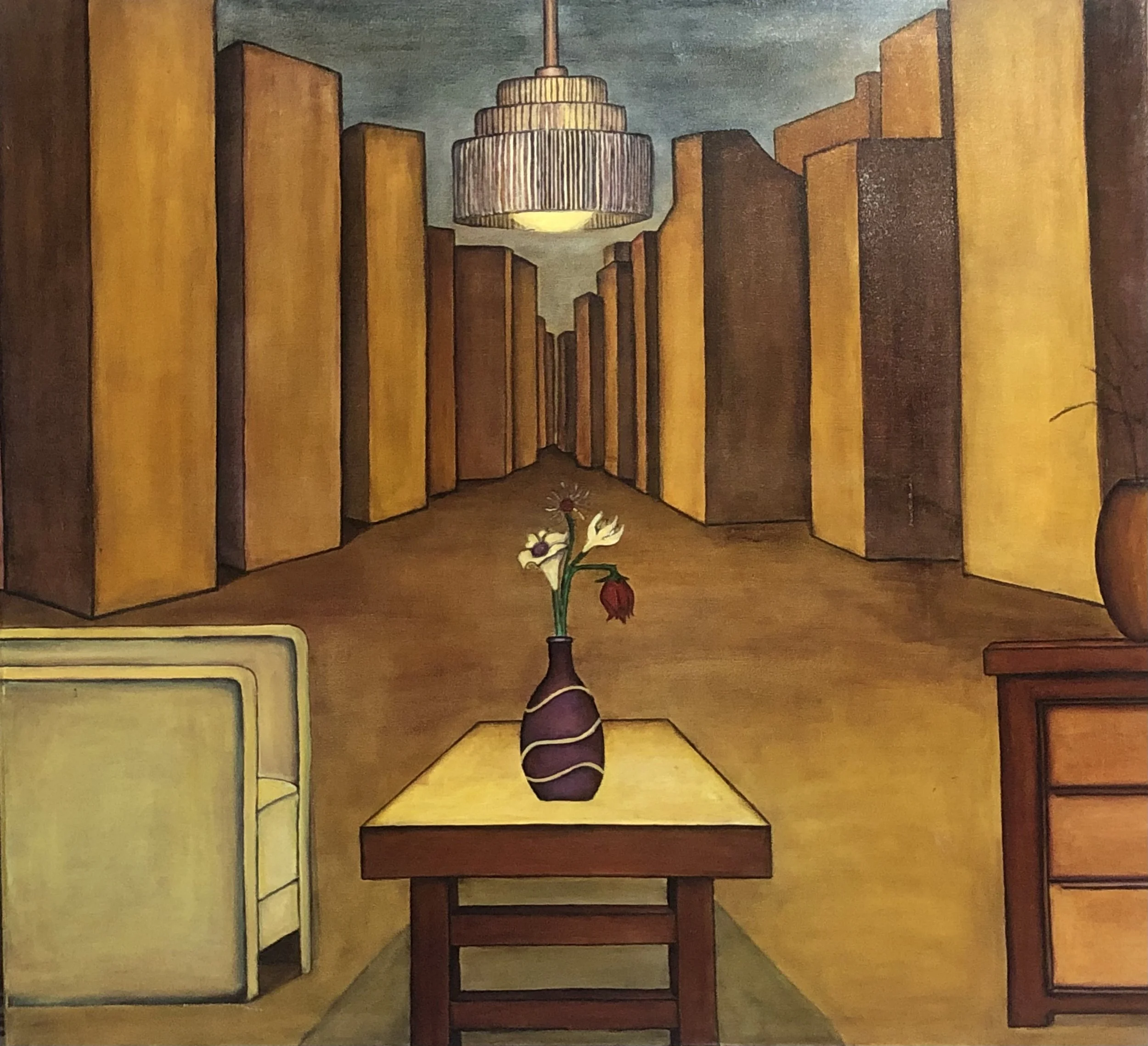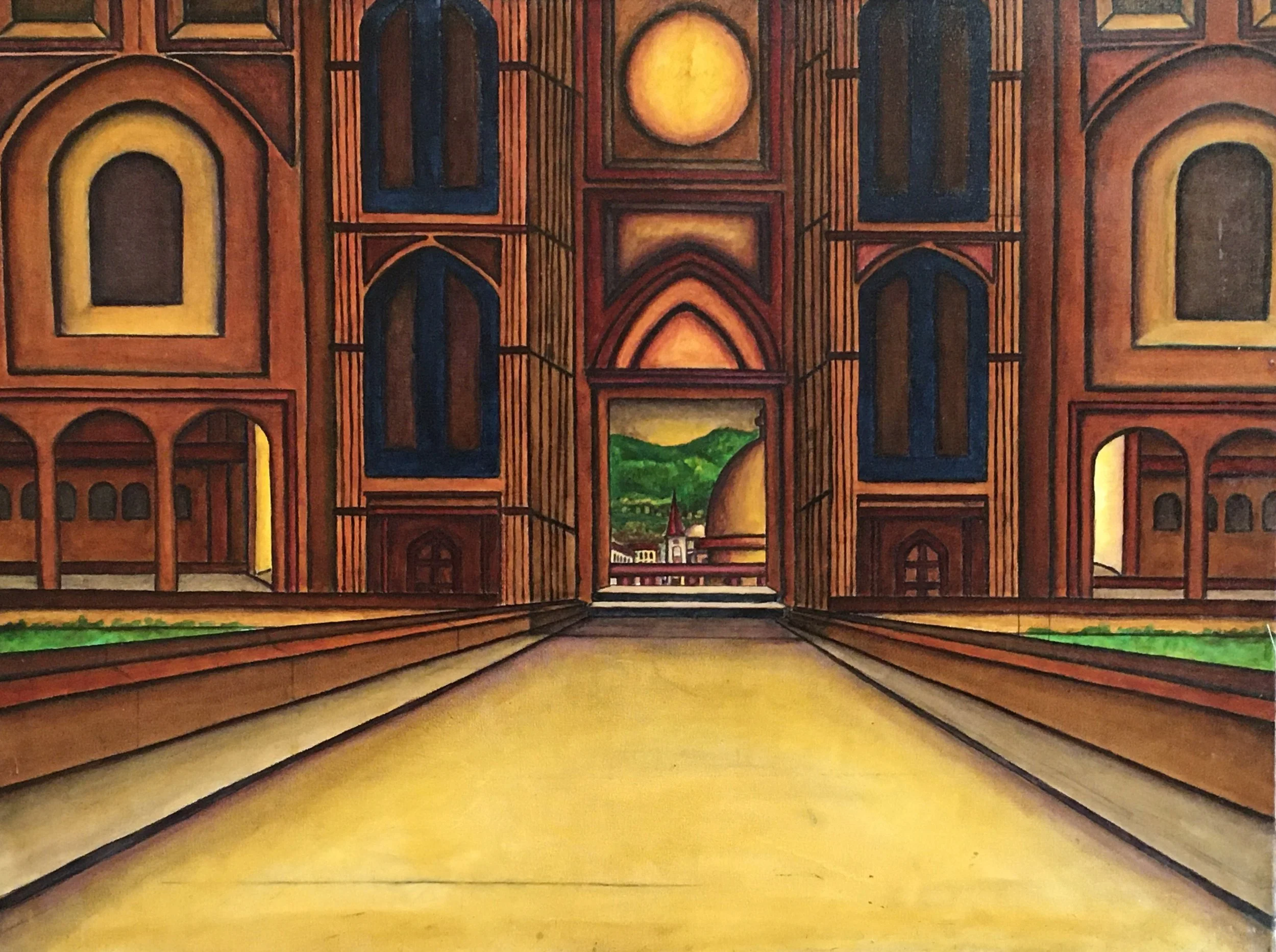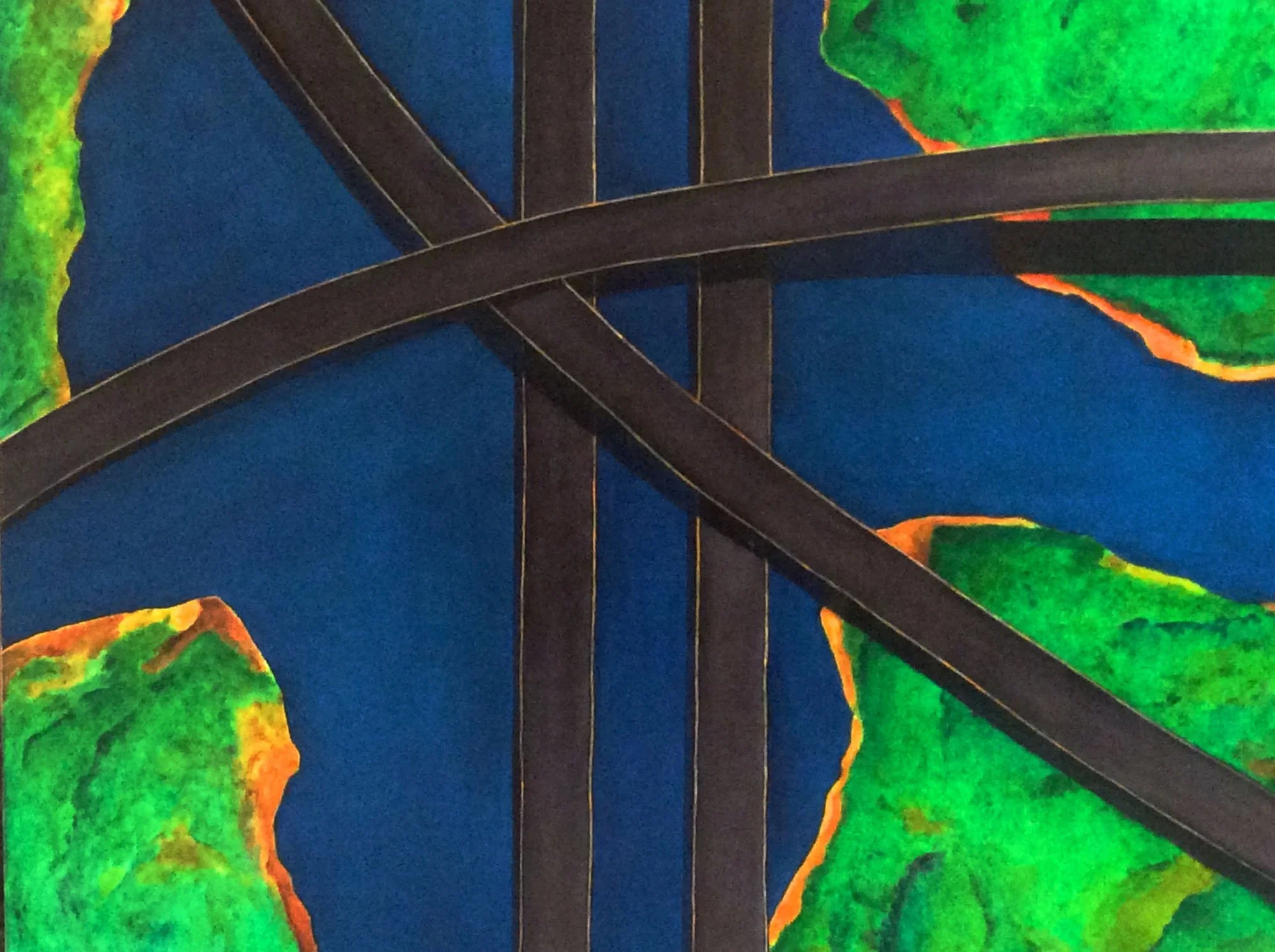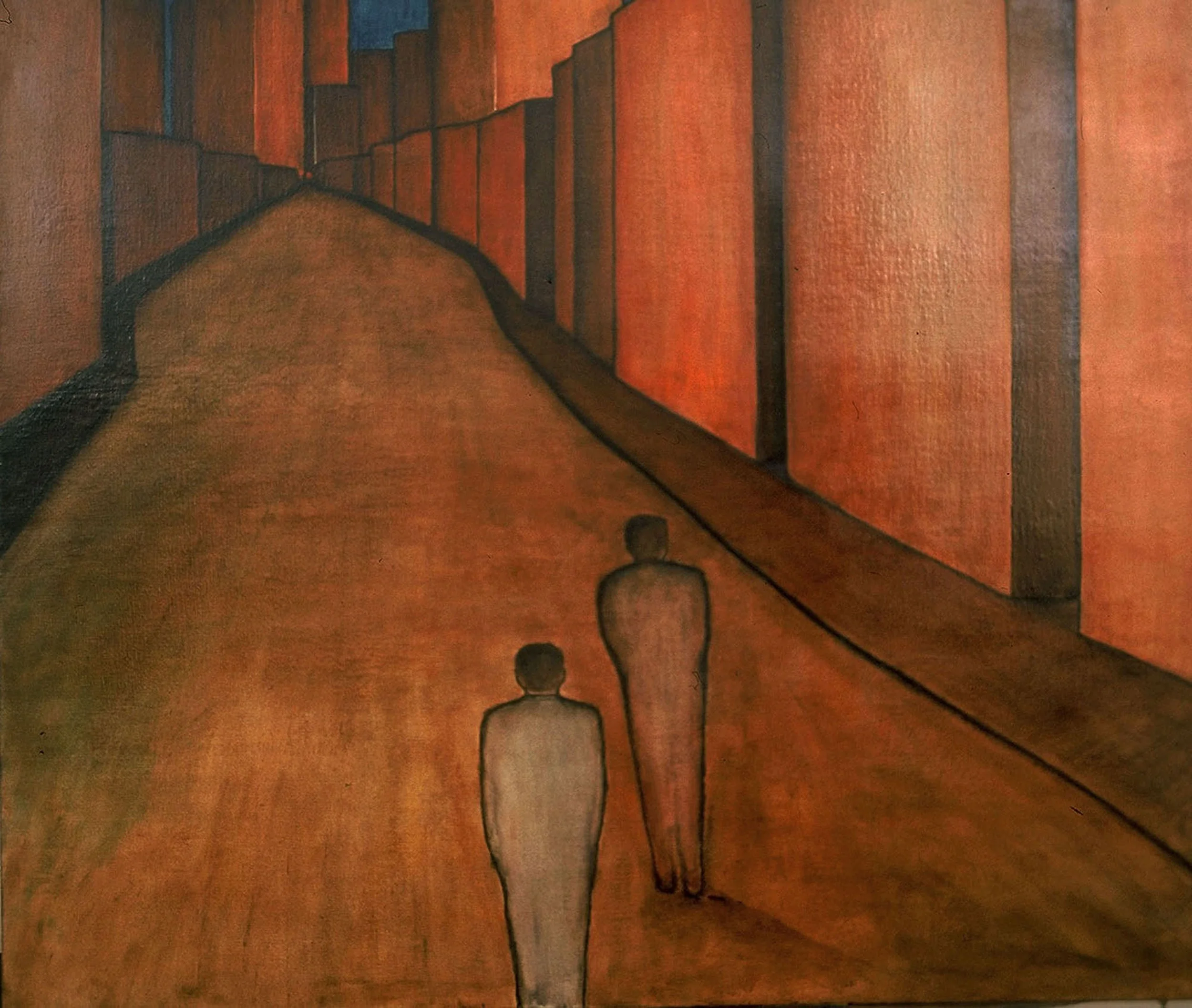Daniel McKinley
Daniel McKinley
Daniel McKinley's oeuvre is a rare combination that stirs the observer’s intellect while simultaneously tugging at the strings of their emotions. His works are vibrant tapestries that weave intricate stories through the use of architectural forms, natural elements, and a rich, earthy palette that feels at once familiar and fantastical.
McKinley’s paintings invite viewers into a world where the boundaries between the interior and exterior, the tangible and intangible, are blurred. Each piece is a contemplation of space, form, and color, masterfully executed to transport the observer to a place that is both otherworldly and grounded in reality. His use of light and shadow is particularly noteworthy, as it adds depth and dimension to the spaces he creates, making them seem almost inhabitable.
In one painting, McKinley depicts a room where the interplay between the warmth of the wooden floor and the coolness of the brick walls creates a harmonious balance, hinting at the yin and yang of living spaces. The strategic placement of furniture and the glimpse into an adjoining room through an open door evoke a sense of curiosity and invite contemplation of the unseen.
Another piece showcases McKinley’s skillful manipulation of perspective. A staircase leads the eye upwards, beckoning the observer to a journey of ascension. The warm hues of the wooden steps contrast with the cool, distant blue of the sky, symbolizing the dichotomy between the earthly and the divine. The architectural elements in this work converge at a point that seems to pierce the canvas, inviting viewers to ponder the convergence of human craftsmanship and the boundlessness of the imagination.
His stilllifes are not mere representations of objects but are imbued with a life force of their own. In one, the simple elegance of flowers in a vase is set against a backdrop of rich, earthy tones. The flowers, depicted with such vibrancy and delicacy, seem to be in conversation with their surroundings, each petal a word spoken in silence.
Perhaps one of McKinley’s most profound pieces is a painting where he captures the essence of a cityscape within the confines of a room. The juxtaposition of the interior’s warmth with the urban landscape's cool detachment serves as a metaphor for the human experience within the urban sprawl. This piece, like many others, is a testament to McKinley’s ability to encapsulate complex narratives within the borders of his canvas.
McKinley’s paintings also exhibit an exceptional grasp of the elements of design. His compositions are carefully constructed, with every line, shape, and color serving a purpose. There is a rhythmic quality to his work that resonates with the viewer, as if each stroke of the brush is a note in a visual symphony. His use of color is both bold and nuanced, creating a visual language that is uniquely his own.
Daniel McKinley’s paintings are more than just visual stimuli; they are an exploration of the human condition through the lens of space and environment. His work challenges the observer to look beyond the surface and to see the world in a different light. His paintings are a sanctuary for the mind and a playground for the soul, each one a chapter in a larger narrative that McKinley is composing with his brush. With every new piece, he continues to solidify his place as a visionary artist whose work is not just seen but experienced.
McKinley’s art speaks to the intrepid spirit of exploration that characterizes the best of human curiosity. There is a palpable sense of movement in his works, as if each painting is but a single frame in a grander sequence of events. This sensation is particularly evident in his depictions of pathways and doorways, which serve as portals to realms bounded only by the limits of imagination. His doorways don't just open onto new vistas; they beckon the viewer to step through, to participate in the unfolding narrative actively.
The play of architectural elements in McKinley's work deserves particular attention. His edifices are not just structures; they are characters in their own right, each with a story to tell. The solidity of the walls and the precision of the windows contrast with the ethereal quality of the light that suffuses his spaces, creating a dialogue between the ephemeral and the eternal. This architectural narrative speaks to a deeper understanding of our place in the built environment, the way our lives are shaped and framed by the spaces we inhabit.
McKinley's work is also a celebration of color. He demonstrates a masterful control over a palette that takes cues from nature as much as from the human-made world. His paintings are suffused with ochres, umbers, and siennas that evoke the earth, while cerulean blues and muted greens hint at the sky and foliage. The harmony of these colors imparts a feeling of tranquility and introspection, making each painting a meditative space within which the viewer can lose themselves.
The artist's use of perspective is another hallmark of his style. McKinley often employs a deep, almost infinite perspective that draws the eye into the heart of the painting. This technique not only creates a sense of depth but also of continuity, as if the scene extends beyond the canvas's edges into a world we are only privy to a part. This sensation is heightened by his deft use of light, which he wields like a sculptor, carving out space and giving form to the intangible.
McKinley’s art also invokes a sense of nostalgia, a yearning for places we have never been but feel intimately connected to. His scenes, while devoid of people, are imbued with the presence of unseen inhabitants. There is a story behind every lighted window, a history in the walls' cracks, and a future in the paths that stretch out before us. The viewer is not merely an observer but a participant in the narrative, invited to fill the spaces with their interpretations and emotions.
Daniel McKinley’s paintings are a symphony of light, color, and form. They are a profound statement on the beauty of the mundane and the grandeur of the imagined. His canvases are not mere pictures but windows into a world that straddles the real and the surreal, offering a place of respite for the weary and a playground for the adventurous. His work is a reminder that art is not just a reflection of life but also a force that shapes how we understand and engage with the world around us.
By Marta Puig
Editor Contemporary Art Curator Magazine


